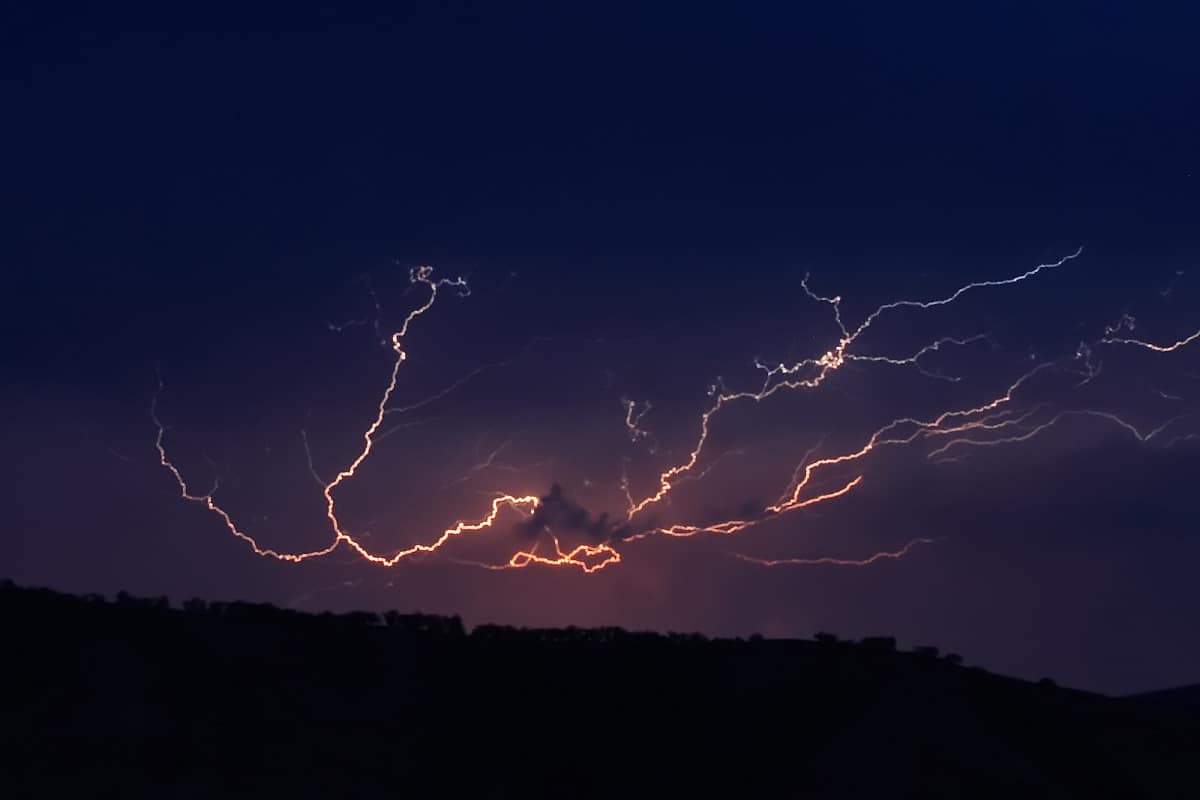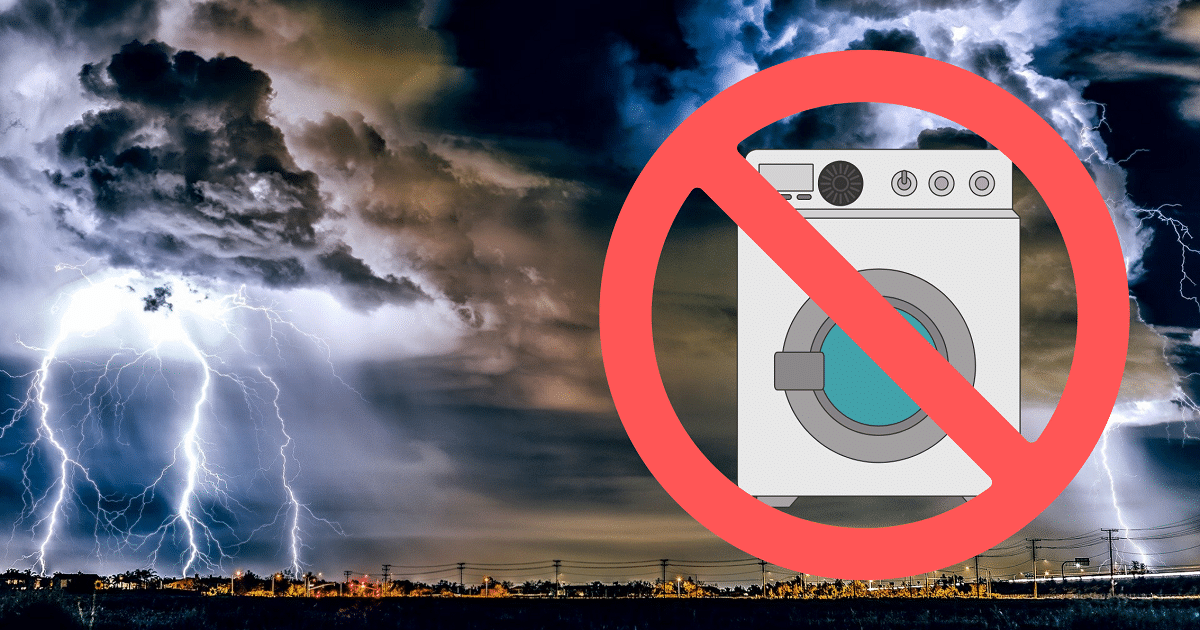
Thunderstorms can be very dangerous if safety measures are not taken for it. Some of them are unpredictable and can cause damage even inside the house. Therefore, it is essential to know what to do during a thunderstorm.
In this article we are going to teach you what to do during a thunderstorm, how to stay safe and what aspects you should take into account to know if you are at risk or not.
What to do before the thunderstorm

A thunderstorm is a sudden release of electrical energy into the atmosphere in the form of a brief flash (lightning) and a snap or explosion (thunder). They are associated with convective clouds and may be accompanied by precipitation in the form of showers, but can occasionally be snow, snow puff, ice puff, or hail.
- Insure items outside your home that could be dislodged or damaged by the strong winds that accompany thunderstorms.
- Close the windows and draw the curtains.
- Reinforce the outer door.
- Remove twigs or dead trees that can cause damage during thunderstorms, as lightning can break twigs and hit people, or even cause an explosion or fire.
- Be on the lookout for severe storm warnings issued every six hours by the National Weather Service
- Install lightning rods on towers and antennas.
- Ensures proper polarization of all electrical outlets, including grounding of the entire electrical system.
What to do during a thunderstorm

- Stay away from high places, such as mountaintops, peaks, and hills, and take shelter in low places that are not prone to flooding or flash floods.
- Stay away from open land such as lawns, fields, golf courses, patios, rooftops and parking lots, since people will stand out due to their size and act as lightning rods.
- There's no reason you should run during a storm because it's dangerous because wet clothing can cause air turbulence and convective zones that can attract lightning.
- Get rid of all metal materials such as walking sticks, framed backpacks, boots with hats, umbrellas, tools, farm implements, etc., as metal is a good conductor of electricity.
- Never take shelter under trees or rocks, the former because humidity and verticality can increase the strength of the electric field, and the latter because lightning strikes often on protruding objects.
- Also, do not take shelter in small or isolated structures such as barns, cabins, sheds, tents, etc.
- Stay away from metal objects and elements such as fences, barbed wire, pipelines, telephone cables and electrical installations, railways, bicycles, motorcycles and heavy machinery, as proximity to them can cause lightning shock waves that heat the air and can cause lung damage.
- Avoid contact with bodies of water, rivers, lakes, oceans, swimming pools and wet areas.
- If there are buildings or vehicles nearby, try to get closer. It is best not to take shelter in small or isolated structures such as barns, cabins, sheds, tents, etc. Find an area that is slightly lower than the surrounding terrain.
- Squat down as much as you can, but only touch the ground with the soles of your feet.
- Avoid taking shelter in caves or rock ledges, through which lightning can generate sparks and even enter natural drains for discharge, as ionized air can collect, increasing the likelihood of a shock.
- Turn off portable positioning and transmitting and receiving instruments such as cell phones, walkie-talkies, GPS and other household appliances, since their electromagnetic radiation can cause lightning strikes and/or cause serious damage due to voltage changes.
- Unplug appliances and other electronic devices, such as computers. Voltage changes caused by lightning can cause serious damage.
Protection Tips

At home
- Close doors and windows to avoid drafts.
- Don't watch the storm from near an open window.
- Don't use fireplaces and stay away from them, as they kick up hot ion-laden air, which increases the conductivity of the air, opening the way for the discharge to act as a lightning rod.
- Disconnect electrical appliances as well as televisions and cable antennas, since lightning can enter through cables and pipes and even damage them.
- Avoid exposure to water, including bathing during electrical storms.
- One way to stay isolated is to sit on a wooden chair and put your feet up on a wooden table. You can also safely lie on a bed with a wooden bottom.
Out of home
If you are in a crowd and there is a storm, it is advisable to disperse a few meters, and if you have children, to avoid panic and/or a possible loss, it is advisable to maintain visual and verbal contact with them, although each one must be separated from the others. .
In the car
The best place to protect yourself is in a car with the engine off, no radio antenna, and the windows rolled up. If lightning struck the car, it will only happen on the outside, not on the inside, as long as it does not come into contact with any metallic object.
What to do if someone is struck by lightning
If someone is struck by lightning, you should do the following:
- Seek urgent medical attention.
- If she's not breathing or if her heart has stopped, try to revive her using standard first aid procedures, such as artificial respiration.
The main problems associated with thunderstorms are the following:
- Injuries
- Skin burns
- ruptured eardrum
- Retinopathy
- Fall to the ground by the shock wave
- Fall to the ground due to muscular rigidity caused by light step tension
- Lung injury and bone injury
- Post traumatic stress
- Death
- Myocardial infarction
- Respiratory insufficiency
- Brain damage
- However, lightning can also cause nervous system damage, fractures, and loss of vision and hearing.
As you can see, electrical storms can become very dangerous if some measures are not taken in this regard. I hope that with this information you can learn more about what to do during a thunderstorm.